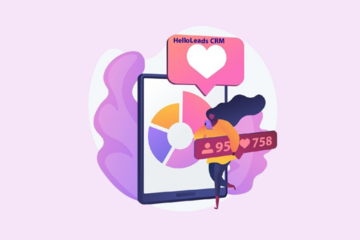
“The secret of getting ahead is getting started.” – Mark Twain
Have you ever felt like your sales team is stuck in an endless loop, securing deals one minute and scrambling for new prospects the next? This relentless cycle can make achieving consistent sales growth a real challenge. Without a steady flow of high-quality leads, maintaining momentum and ensuring that every sales effort is effective becomes a significant struggle.
This is where prospecting and lead generation come in! They’re the two secret weapons businesses need to keep their sales pipeline overflowing with qualified leads and their sales team laser-focused on closing deals.
Imagine your sales funnel as a tranquil river. To keep the water flowing and your business thriving, you need a constant source feeding the river upstream. That source of fresh water? It’s the powerful combination of prospecting and lead generation working together.
Prospecting: the targeted hunt
“You are out of business if you don’t have a prospect.” – Zig Zigler.
Prospecting is the art of identifying and qualifying individuals or businesses with the potential to become your customers. It’s about going out there, researching your target market, and finding those who have a genuine need for what you offer. Think of it as hunting, but instead of prey, you’re searching for ideal customers.
Here are some effective prospecting techniques:
Market research: Conduct thorough market research to understand your target audience’s demographics, buying habits, and pain points. This allows you to tailor your prospecting efforts for maximum impact.
Networking: Attend industry events, conferences, and online communities to connect with potential customers and build relationships.
Social selling: Leverage social media platforms like LinkedIn to connect with potential customers, share valuable content, and establish yourself as a thought leader.
Cold calling: While sometimes seen as outdated, cold calling can still be effective when done strategically. Make sure you have a clear value proposition and practice your pitch beforehand.
Referral marketing: Encourage your existing customers to recommend your products or services to their network. Referral programs can be a great way to generate high-quality leads.
Lead generation: casting a wider net

Lead generation, on the other hand, is about attracting potential customers to you. It involves creating content, running marketing campaigns, and building a strong online presence that compels people to show interest in your products or services. Imagine lead generation as casting a wide net to catch a variety of fish, some of which will be perfect for your business.
Here are some key lead generation strategies:
Content marketing: Create high-quality content like blog posts, e-books, infographics, and videos that addresses your target audience’s pain points and interests. This content will attract potential customers to your website and establish you as a trusted resource.
Search Engine Optimization (SEO): Optimize your website and content for relevant keywords to improve your ranking in search engine results pages (SERPs). This will help potential customers to find you organically, when they search for solutions.

Pay-Per-Click (PPC) advertising: Run targeted PPC ads on search engines and social media platforms to reach a wider audience.
Email marketing: Build an email list of potential customers and nurture them with valuable content and special offers.
Social media marketing: Utilize social media platforms to connect with potential customers, share valuable content, and engage in conversations.
Here’s why both prospecting and lead generation are essential for your business success:
- Fills your sales pipeline: Without a constant flow of leads and prospects, your sales team will have nothing to work with. Prospecting and lead generation ensure a healthy pipeline filled with potential customers
- Increases sales opportunities: By consistently prospecting and generating leads, you increase your chances of finding high-quality prospects who are more likely to convert into paying customers. This, in turn, boosts your sales opportunities and overall revenue
- Targeted outreach: Prospecting allows you to tailor your message to the specific needs and challenges of your ideal customer. This personalized approach increases the chances of engagement and conversion
- Builds brand awareness: Lead generation strategies like content marketing and social media engagement help you establish your brand as a thought leader in your industry. This builds trust and positions you favorably when potential customers are ready to buy
- Builds relationships and trust: Effective prospecting and lead generation involve nurturing relationships with potential customers. By providing valuable information and engaging with prospects over time, you build trust and credibility, which are essential for converting leads into loyal customers
- Improves sales efficiency: With a well-defined prospecting and lead generation strategy, your sales team can focus their efforts on qualified leads who are more likely to convert. This improves the efficiency of your sales process, reducing the time and resources spent on unqualified leads
- Supports business growth: A consistent flow of new leads is essential for business growth. It allows you to expand your customer base, enter new markets, and increase your market share. Without effective prospecting and lead generation, achieving sustainable growth becomes challenging
- Measurable results: Both prospecting and lead generation activities can be tracked and measured. This allows you to see what’s working and what’s not, so you can continuously optimize your approach for better results

Prospecting and lead generation are not interchangeable; they work together to create a powerful sales engine. By implementing a combination of targeted outreach and strategic attraction methods, you’ll ensure a steady flow of high-quality leads that your sales team can convert into loyal customers.
Conclusion
By mastering both prospecting and lead generation, businesses can create a dynamic sales pipeline that not only keeps the river of opportunities flowing but also ensures that it remains full of high-quality prospects. Embrace these strategies to build a robust sales engine that drives growth, enhances efficiency, and propels your business towards sustained success.
Share this blog :










